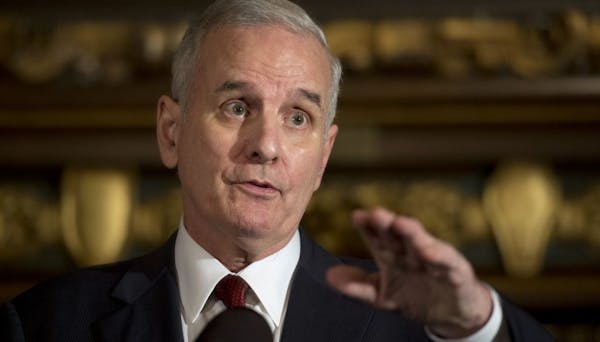By the time college football fans begin filling stadiums this August, the entire NCAA landscape could be rippling with change as the Big Ten and four other major conferences seek to align and shape their own rules.
Rebuffed by smaller-revenue schools in previous attempts to address athletes' concerns, the so called "Power Five" conferences — the Atlantic Coast, Big Ten, Big 12, Pac-12 and Southeastern — are declaring the need for autonomy.
In May, the Pac-12 presidents laid out a list of 10 objectives these 65 schools should seek, including more money for all scholarship athletes and longer-term medical coverage for injuries suffered in college.
Some warn of stretching athletic budgets too thin, forcing some schools to cut sports. But SEC Commissioner Mike Slive said last week that if the Power Five conferences aren't given the flexibility to form their own bylaws, they might have to create a new NCAA division — Division IV.
In a more measured statement from their summit in Chicago this past weekend, the Big Ten's presidents and chancellors said they support major changes but that "more work needs to be done as we seek to implement a 21st century governance structure."
The proposal granting autonomy to the Power Five conferences is expected to pass the NCAA board of directors in an August meeting and then be put to a vote of the full NCAA membership in January.
"There is certainly a good chance of some changes," Gophers athletic director Norwood Teague said Monday. "I'm not sure there's any need to panic, whether you're a midmajor or a Big Five school. It may be a good time for readjustment."
Besides the longer-term medical coverage, here's how athletes at the Power Five schools could benefit:
• A full scholarship currently covers room, board, tuition and books. But an additional $2,000 to $5,000 could be paid annually to cover expenses such as transportation, laundry and clothes and other reasonable student expenses under a "full cost of attendance" measure, which would vary from school to school based on estimated expenses and cost of living.
• Scholarships, which currently are year-to-year contracts, would be guaranteed long enough to receive a bachelor's degree.
• Decreased time demands from the teams both in and out of season.
• Renewed focus on academics, via tougher Academic Progress Rate (APR) requirements for postseason play.
• Loosened transfer restrictions.
"NCAA rules shouldn't interfere with the ability of the university to provide high-quality education to student athletes," said Richard Painter, who teaches corporate law at the University of Minnesota. "We need the flexibility to be able to do that."
Added Teague: "When we're making an effort to support our student-athletes from a health perspective, from an insurance perspective, from a total collegiate athletic experience, I like that. So I think we'll make good decisions."
But there could be some unintended consequences. Former Gophers football player Justin Conzemius cited the additional gap that would form between those 65 schools and other NCAA institutions. Recruits would have less incentive to choose a school outside the Power Five.
"If we thought we were getting close to parity in college sports, we would actually get further apart," Conzemius said.
Sports economist Andrew Zimbalist said that would be a particular concern for NCAA basketball, which has drawn much of its charm from the little school vs. big school upsets at tournament time.
"I'm not particularly comfortable with the individuals who are seemingly making these decisions in the NCAA," Zimbalist said. "I don't think they have represented what's in the best interest in college sports for some time, and I don't think they're the brightest individuals, so it's hard to say."
Even within the pool of 65 power conference schools, there are big differences in athletic department revenues. According to USA Today, Ohio State had $142 million in athletic revenue in 2012, compared with $83.6 million at Minnesota. Paying those "full cost of attendance" stipends would hit each budget differently.
"At places where it's getting to be a pinch point, you could see [programs] getting eliminated to help fund the revenue-generating sports," Conzemius said. "That's where it'd be a bummer. Now you've changed forever the makeup of your college team portfolio."
Teague said he's paying close attention to how these changes could affect Minnesota's budget.
"We're always trying to spend our dollars wisely and give our student athletes the best experience that we can," he said. "So I have faith that in the end, we'll be able to do that."
Staff writer Amelia Rayno contributed to this report.
French athletes at Paris Olympics will receive better mental health protection
Chinese Grand Prix could deliver drama to F1 and slow Verstappen's victory march
NFL draft will include many Michigan men, maybe enough to break record set by 2022 Georgia Bulldogs

